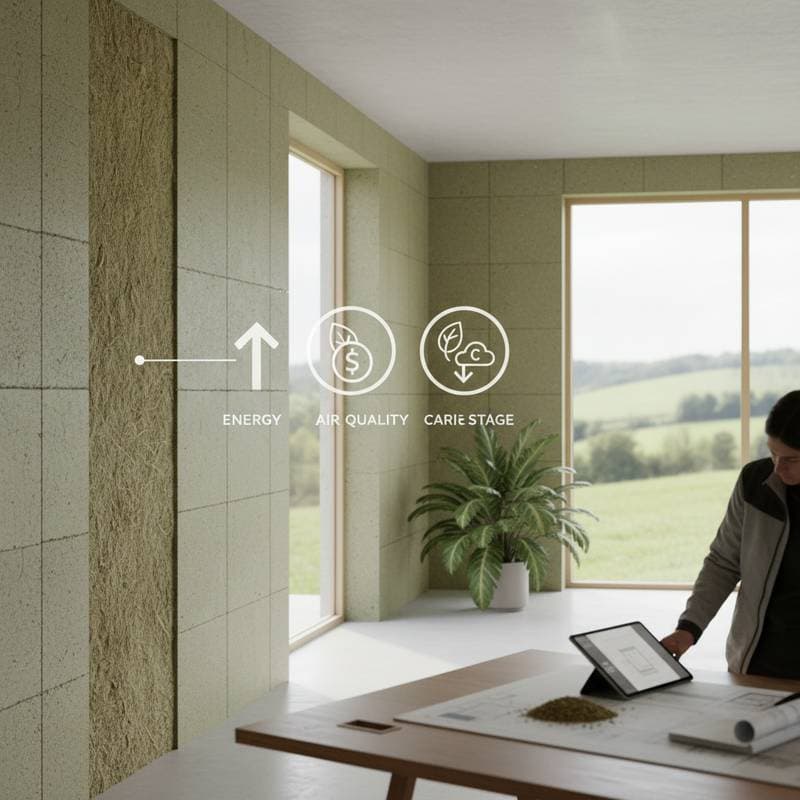Mycelium Insulation: Revolutionizing Eco-Friendly Homes in 2025
Key Points
- Mycelium insulation, derived from fungal networks, provides a sustainable alternative to fiberglass and foam insulation products.
- This material offers thermal performance that matches traditional options, combined with natural fire resistance and complete biodegradability.
- Although initial costs surpass those of conventional materials, long-term energy savings and enhanced property values deliver significant returns.
- Homeowners integrate mycelium insulation into new constructions and renovations, choosing formats suited to project scope and budget limitations.
- In addition to efficiency improvements, the material enhances indoor air quality and minimizes environmental impact.
The Rising Importance of Mycelium Insulation
The construction sector faces mounting demands to lower carbon emissions and adopt materials that foster circular economies. Homeowners now regard sustainable elements as boosts to living standards and property appeal. Mycelium insulation addresses these priorities with its organic makeup and superior performance characteristics.
Financial advantages prove particularly compelling. Energy-efficient insulation cuts heating and cooling expenses by 10 to 30 percent, based on local weather patterns and home dimensions. Across a 20-year span, such reductions can total tens of thousands of dollars for average households.
From an environmental standpoint, mycelium products hold distinct benefits. In contrast to synthetic counterparts, these panels and batts decompose through composting at the end of their lifespan, preventing additions to landfill volumes.
Health aspects further underscore its appeal. Mycelium materials harbor no toxins and emit no volatile organic compounds. Consequently, they promote healthier indoor spaces, a feature that attracts current occupants and prospective purchasers.
Evaluating Costs and Long-Term Value
Prospective users often inquire about the economic rationale for mycelium insulation. Pricing currently runs 15 to 25 percent higher than fiberglass or foam equivalents. For a standard 2,000-square-foot residence, this difference amounts to an extra $2,000 to $4,000 at the outset.
A comprehensive review demonstrates robust payback. Residences featuring mycelium insulation typically see 20 percent reductions in energy bills relative to those adhering only to minimum code standards. Yearly savings for typical families fall between $400 and $600.
Resale benefits contribute to the overall picture. Homes with green enhancements draw interest from selective buyers, often increasing market value by 2 to 5 percent. Upon decommissioning, the material's compostable nature avoids disposal costs and ecological liabilities.
These elements reflect wider trends in green construction. Upfront expenditures lead to enduring gains in economics, health, and environmental stewardship.
Professional Perspectives on Effectiveness
Experts in building and sustainability monitor mycelium insulation closely. Structural engineers verify that its R-value enables reliable application in diverse climates, provided installation follows best practices. Architects appreciate its seamless incorporation into designs and the narrative it adds to environmentally conscious projects.
Building scientists stress the need for meticulous setup. As with other insulation varieties, outcomes hinge on comprehensive air sealing, vapor barriers, and qualified workmanship. Even high-quality materials falter without these essential measures.
Laboratory tests affirm its dependability. Mycelium attains fire ratings on par with treated cellulose, while preserving vapor permeability that averts condensation issues in walls and roof spaces.
Emerging Market Dynamics and Consumer Choices
Eco-friendly attributes have shifted from niche applications to widespread expectations. Recent polls among homebuyers rank energy conservation and organic materials as leading factors in upgrades and acquisitions.
Mycelium insulation fits these inclinations seamlessly. It fulfills needs for reduced utility costs, purer air, and lessened planetary strain. Residents in mycelium-insulated dwellings describe tangible advantages alongside fulfillment from their stewardship decisions.
Availability expands steadily. Manufacturers broaden product lines as output grows, supporting implementations in both city and countryside locations.
Steps to Implement Mycelium Insulation
Homeowners exploring mycelium insulation benefit from a systematic process:
- Evaluate Project Scope: Determine if the insulation suits full-home coverage, targeted areas such as attics, or adaptations in current structures.
- Review Budget Implications: Secure estimates from builders for standard and mycelium alternatives, incorporating forecasts of energy reductions over two decades.
- Locate Suppliers: Verify regional stock via distributors or experts, given the evolving supply chains.
- Consult Specialists: Select contractors versed in green methods to guarantee peak results and regulatory adherence.
- Weigh Ongoing Advantages: Consider how sustainability credentials affect future sales appeal and owner contentment.
This framework converts curiosity into strategic action.
Frequently Asked Questions
Does mycelium insulation introduce a fungal odor to the home?
The manufacturing process fully dries the mycelium, yielding a scent-free final product. Any manufacturing aromas dissipate prior to delivery for installation.
Is it suitable for individuals with mold sensitivities?
Production halts fungal growth long before completion, creating a spore-free substance that withstands mold in moist environments.
How does its performance stack up against spray foam?
Spray foam delivers greater density per thickness, yet mycelium provides strong outcomes absent chemical additives. Paired with effective air barriers, it meets insulation demands in varied regions.
Can homeowners handle the installation independently?
Batt formats suit minor self-directed tasks, like attic enhancements. Extensive or intricate work demands professional skills to meet codes and maximize efficiency.
Does it attract pests such as rodents or insects?
The compact, desiccated composition deters infestations, akin to cellulose or wool-based alternatives.
Do building regulations permit its use?
Approval differs by locale, though mycelium passes conventional assessments for fire and heat retention. Authorities typically endorse it via approved material protocols.
Advancing Home Comfort Through Mycelium Choices
Mycelium insulation reshapes standards for residential materials, harnessing biological innovation for tangible outcomes. It secures consistent insulation, superior air quality, and a lighter carbon load that resonates with progressive homeowners.
Upfront commitments yield returns in operational savings, longevity, and competitive positioning. For upcoming builds or refreshes, discussions with mycelium authorities unlock these opportunities.
Initiating with modest applications, such as roof spaces or additions, enables direct experience of its merits. Decisions today prepare residences for sustained livability and harmony with evolving green benchmarks in housing.










